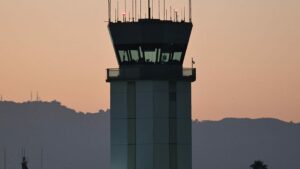IDFC First Bank is set to double its branch network in five years and reduce bad loans. It aims to expand its assets by 20% annually over five years and deposits by 25%.
“I think a 20% loan growth target is comfortable to achieve when large banks which are 7-8 times our balance sheet are comfortably growing at 20%. So, I think clearly, to grow this 20% should not be a problem at all,” said V Vaidyanathan, CEO of IDFC First Bank.
After achieving most of the guidance parameters set in 2019, Vaidyanathan is confident of meeting the targets as this time he has a lot more visibility and knows how the liabilities machine and asset book work.
“We are giving this guidance 2.0 with better visibility today, and better conditions than when we gave guidance 1.0, because we have a stable operating business that is delivering,” he said.
Earlier, there were several unknowns – from asset quality to deposit franchise and the Covid impact. Despite these challenges, the bank has been able to improve CASA (current account savings account) from 8.7% in December 2018 to 46.8% in December 2023 and increased its loan book from ₹1.04 lakh crore to ₹1.89 lakh crore.
The bank plans to double its branch network to 1,700-1,800 by March 2029, from 897 as of December 2023. It will open branches based on requirements to meet deposit goals.
Over the next five years, it plans to grow deposits at a compounded annual growth rate (CAGR) of 25% as against the current growth of 42.8% to ₹5.85 lakh crore by March 31, 2029. Both CASA and other deposits should expand in the 24-25% range. During the post-merger period, the bank successfully raised CASA and retail deposits, utilising these funds to repay bulk corporate deposits and certificates of deposits.
Loans and advances will see a CAGR of 20.3% as against the current year-on-year growth rate of 24.5% to ₹5 lakh crore from ₹1.89 lakh crore. While growing the loan book, the bank plans to keep asset quality under control by improving the gross non-performing asset (NPA) ratio to 1.5% from 2.04% and net NPA to 0.4% from 0.68%.
Also, the bank will exit the legacy infrastructure financing portfolio, hence the reference taken for guiding NPA excludes the infra-financing portfolio. In the past, the bank has seen stress from many legacy wholesale loans like DHFL Reliance Capital, Cox & Kings and infrastructure accounts where it had to write off around ₹2,000 crore. This eroded net worth, and book value per share, and reduced income of about ₹200 crore in annuity.
IDFC First has guided for a return on equity (RoE) of 18% and return on assets (RoA) of 1.9-2.0% at the end of March 31, 2029, up from 10.7% and 1.2% as of December 31, 2023. The bank’s net profit will be ₹12,000 crore to ₹13,000 crore on March 31, 2029, up from ₹2,232 crore in the nine months ended December 31, 2023.
While outlining its plans for the next five years, the bank said it met most targets set out at the time of the merger. As of December 31, 2023, IDFC First Bank has completed five years post the merger of IDFC Bank and Capital First.
During the first three years after the merger, the bank grew the loan book by 5.1% to conserve capital and improve the liabilities side. The bank focused on raising CASA and retail deposits and used the same to repay bulk corporate deposits.











